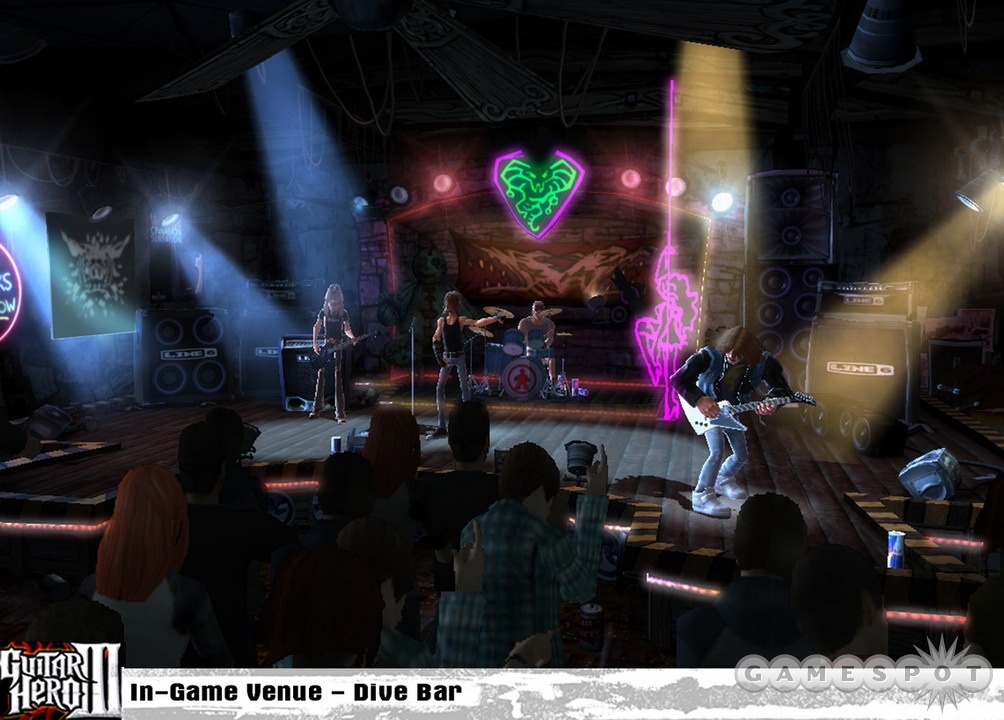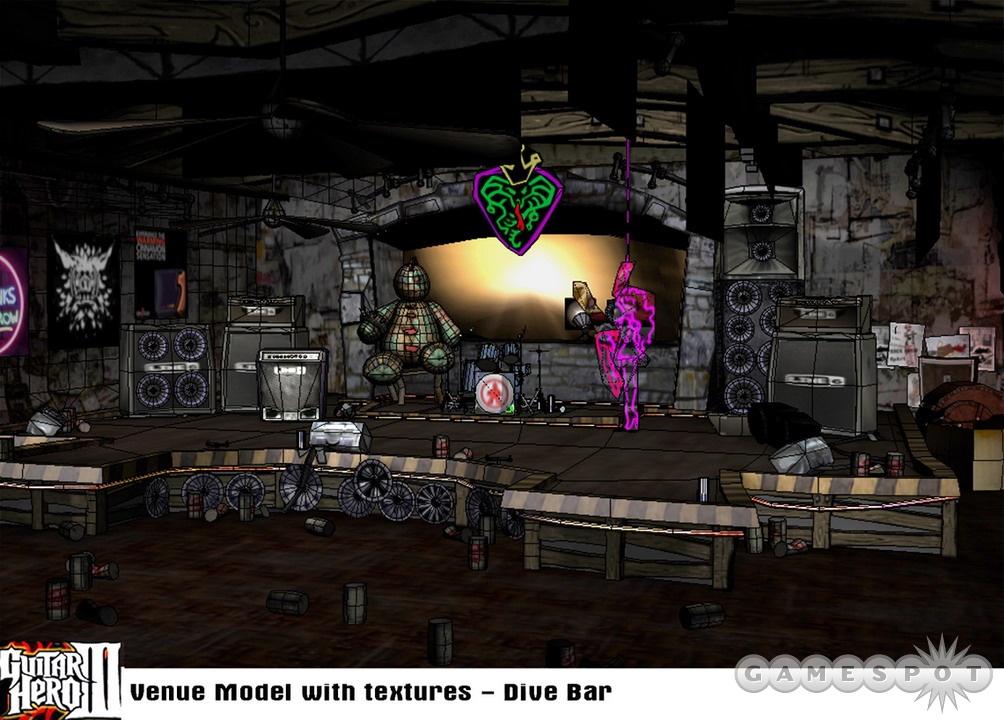Guitar Hero III Developer Diary #2
We learn about the process of creating the clubs you'll be rocking in GHIII, straight from the artists who created them.
Sure, most rock clubs smell like a strange mixture of alcohol and body fluids, but as any fan can tell you, the right atmosphere can make a good concert great or turn a bad show into something you won't soon forget. The same goes for the virtual spaces you'll be rocking out in the upcoming Guitar Hero III. In our last developer diary, we got to learn about the process of transforming the music into guitar-shredding gameplay. This time around, two Neversoft venue artists--Jake Geiger and Ryan Magid--talk about what it takes to bring the rockin' dive bar from concept to (virtual) reality.
Rock This Joint
By Jake Geiger and Ryan Magid, Neversoft
Jake Geiger, venue art lead, and Ryan Magid, senior venue artist, here to tell you a little bit about the venue art that went into the latest version of Guitar Hero III: Legends of Rock.
The Guitar Hero franchise has such a huge fan base already that you want to make a seamless transition into the next installment of the series. Thankfully, with a group of talented artists and wonderful programmers, we were able to exceed even what we thought was possible. We knew from the start that we wanted to keep with the general style and look of the previous games, but we wanted to add a certain spark to push the concept even further.
Typically, our process starts with a brainstorming session. The environment art team will get together and throw around ideas for venues. Some are good, and some are not so good. Once we have a good list of potential candidates, we'll head off and gather reference for each one of the ideas. After finding reference for each, we will usually meet again to whittle the list down more until we have the final list of venues that we want to have in the game.
Now is when the concept stage will begin. Our concept department will take the ideas and flesh them out into 2D concept paintings of each venue. Once the concept paintings have been approved, the venue moves into what we call the "pop up" stage. We call it that because once done, the venue resembles a large pop-up book.
At this stage, the concept drawings are taken, cut up, and placed into the 3D scene as rough draft of what the final 3D geometry will be like. This helps us to visualize placement and layout of stage props and gear so that the animation department can start to put in cameras, band members can be placed, and lightshows can be started. It also provides a general feel for what the final venue will be like.
Once the "pop up" has been approved and any logistical problems have been worked out, the venue moves into the final art stage. This is the time when all of the 2D pop-up elements are fleshed out and made into fully realized working stage props. Various scripts and animations are used to make them move and give life to the stage. Our concept team works hand in hand with the environment artists. Most objects will be broken down and the concept artists will paint textures for an object while the environment artists build it in 3D.

The goal is to make all of the geometry, textures, and lighting look as much like the approved concept work that was done in the initial planning stages as possible. In the end, we made a game that we are not only happy to have worked on but also love to play, and it takes lots of guys coming together at the same time to pull this off.
Got a news tip or want to contact us directly? Email news@gamespot.com

Join the conversation